Why did they stop producing uranium glass
Categories: History | Technology | World
By Pictolic https://pictolic.com/article/why-did-they-stop-producing-uranium-glass.htmlThere is always a lot of speculation around uranium glass - once it has stopped being produced, it's not for nothing.
Many have heard that Lyudmila Gurchenko collected a large collection of dishes made of uranium glass, but the connection of beautiful antique dishes with some problems of the actress, of course, is a story.
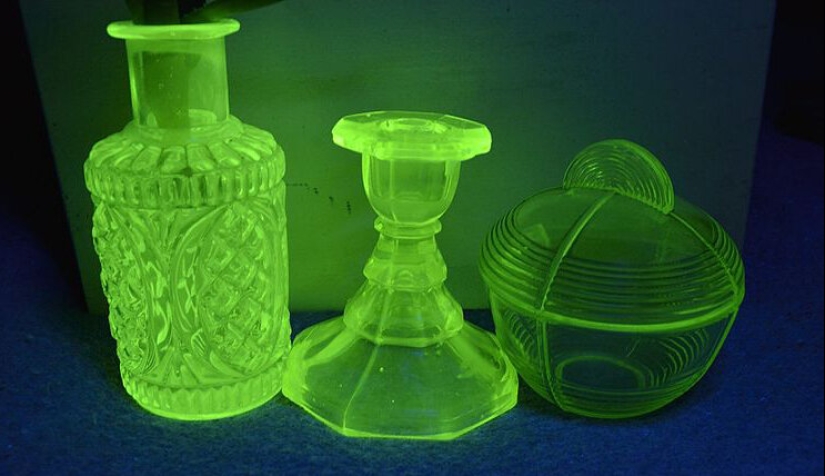

Uranium glass is an ordinary borosilicate glass in which uranium oxides are added. These additives give the glass a beautiful color, different, depending on which compound was introduced into the glass mass.
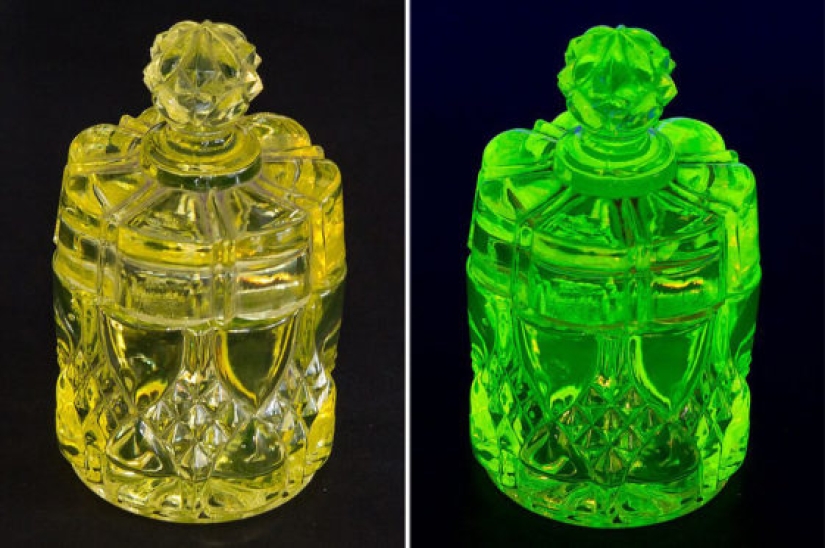
The color of uranium glass usually varies from canary yellow to almost emerald, sometimes brown or orange glass was made. This glass has special refractive properties and therefore shines very beautifully, like crystal - that's why it was so popular in the 19th and first half of the 20th century, when it was produced a lot.
After the end of the production of this glass, it turned out that it also fluoresces in ultraviolet light – that's why collectors store it in special showcases with special lighting.
In general, uranium glass has been known since ancient times, in the Middle Ages it was made by adding nasturane, a uranium mineral mined in Bohemia, to the glass mass. It was a common dye, in the 19th century, when "canary" glass was in fashion, it was produced by thousands of tons.

Even the famous stained glass windows at the Novoslobodskaya metro station were going to be made of uranium glass according to the very first project – according to the designers, it would create a very special lighting of the station and interesting lighting effects. But the state banned uranium glass, and it was necessary to make stained-glass windows out of ordinary (it was in the early 1950s).
So, when they talk about why they stopped producing such beautiful glass, they put forward three main versions:
All three versions are only partially correct. The harm from uranium glass for consumers is completely insignificant. Although the glass contains a solid percentage of uranium oxides, and the glass has radioactive radiation, it is completely harmless in everyday terms.
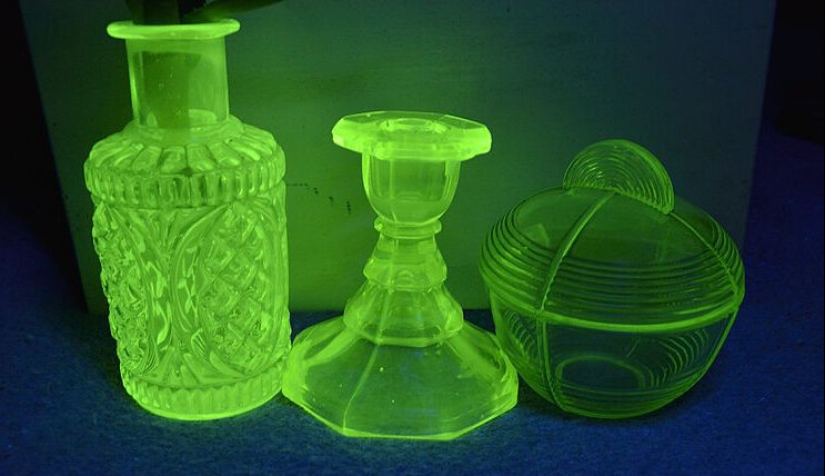
The level of radiation is low (it grows with time, but it should become really intense in a few thousand years after the glass is made), and this radiation does not go further than 15 cm from the surface of uranium dishes. So a vase made of such glass standing in the sideboard will never cause damage to the health of its owner.
Theoretically, radioactive uranium can leach out of dishes and so is able to enter the human body. But in reality, leaching occurs if acid is poured into the dishes, and in such a concentration, the use of which makes the harm from uranium ridiculous
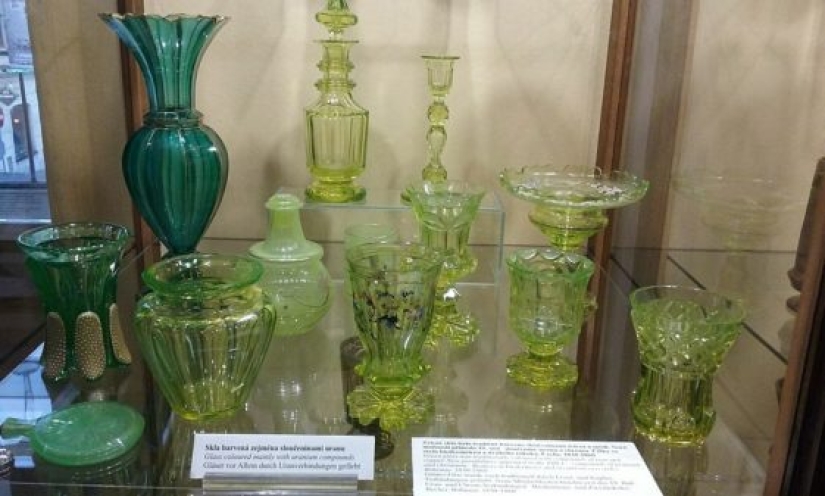
For glass blowers who manufactured uranium glass, the damage was really huge – the average life of a glassblower in the 19th century rarely exceeded 35-38 years. But no one cared about it then, the trade unions were not in honor. In Victorian times, most technologies were very harmful. We wrote how hatters went crazy from mercury vapor and chimney sweeps died from soot.
And in the 20th century, dishes made of uranium glass began to be made industrially, and it became very cheap. It was even nicknamed "depressive tableware" because during the Great Depression in America, the government supported glass manufacturers by buying up their products and literally distributing them to the public for free.
But it lasted exactly until the 40s.
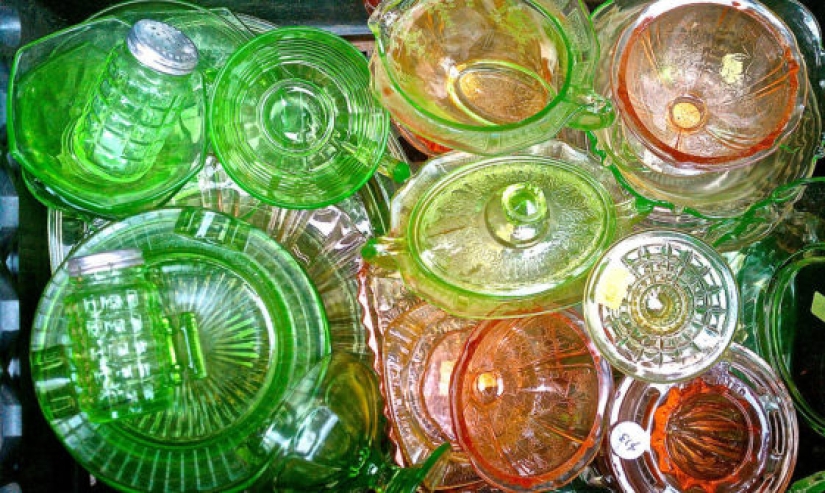
The real reason why uranium glass stopped being produced is that uranium found a new use in the middle of the 20th century, military and peaceful. Uranium suddenly became a truly precious and strategic raw material, now it was out of the question to waste it on making dishes.
That's why the Soviet government did not allow uranium stained glass windows in the subway, the architects were promised any raw materials, but uranium is for nothing, a strategic valuable mineral.
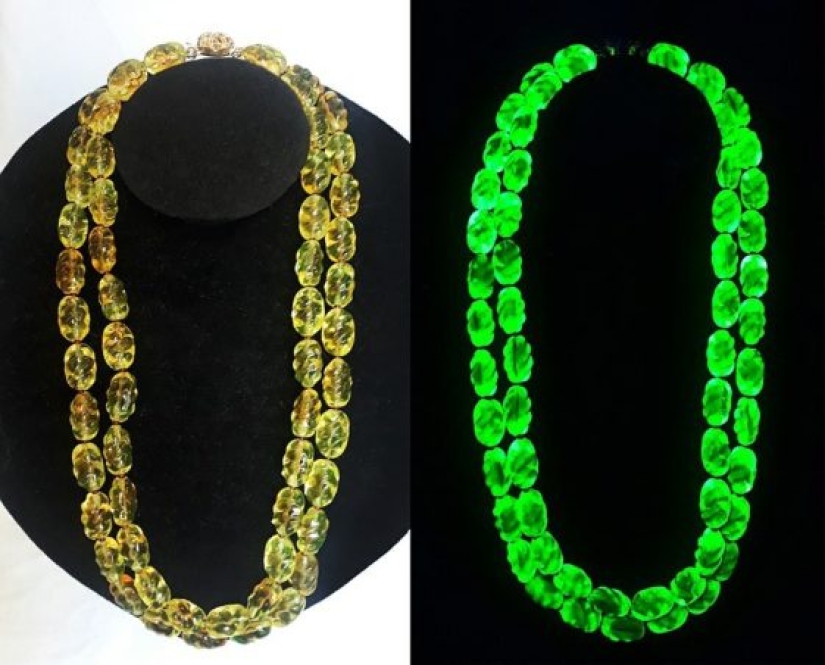
In addition, such dishes would now become very expensive to produce, because the market price of uranium compounds jumped into space.
And the marketing of such dishes would be at risk - after all, everyone knows about the radioactivity of uranium. But at the same time, antique uranium glass can be bought quite inexpensively, if there is a desire – it was produced a lot.
Recent articles

Most of us loved as kids magic tricks, but someone loves them right now. However, the attitude to the hoax became a few others ...

Everything is changing. This is well and has long been known to everyone. But when something stays with you for a long time, it is ...

Compared to the 1970-ies 1980‑e years were a time of cautious optimism in new York. Boom on wall street fueled the speculative ...